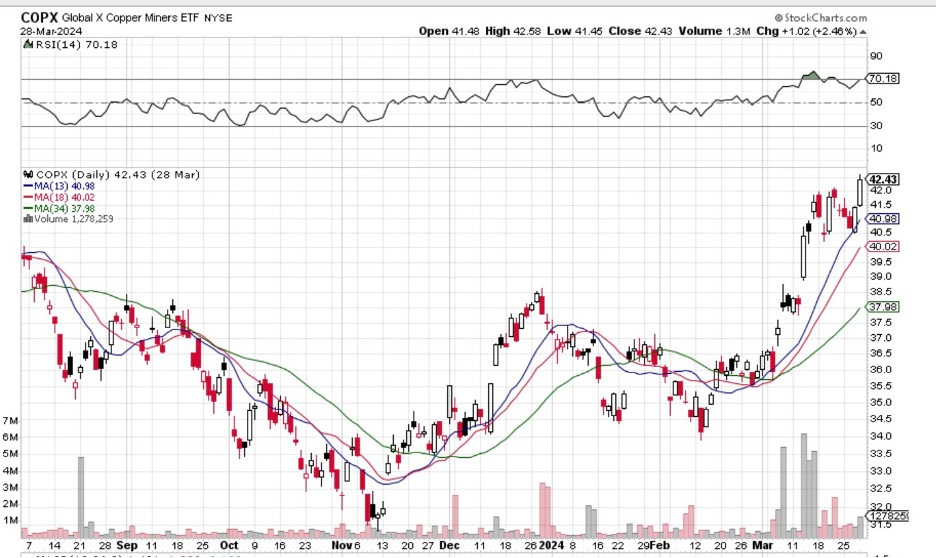Apple has been slammed with a broad antitrust lawsuit by the U.S. Department of Justice, alleging that the iPhone maker violated federal law to preserve its dominant position in the mobile phone market. Attorneys general from 15 states, including Apple’s home state of California, and the District of Columbia joined the lawsuit.
Filed in federal court in New Jersey, the lawsuit asserts that Apple has engaged in behavior that not only limited competition in the smartphone market but also affected a variety of other industries that rely on mobile devices to reach consumers, including financial services, fitness, gaming, social media, news, entertainment, and others.
“Apple has maintained monopoly power in the smartphone market not simply by staying ahead of the competition on the merits, but by violating federal antitrust law,” Garland said. “We allege that Apple has employed a strategy that relies on exclusionary anticompetitive conduct that hurts both consumers and developers.”
The stakes for Apple are high. Apple’s highly profitable services business has a revenue run rate of close to $100 billion a year; the iPhone business is at a $200 billion annualized run rate. The government’s position is that Apple has taken many steps to preserve its strong position in mobile phones and then leveraged its market share in phones to make an aggressive play for mobile services.
In the complaint, the government asserted that unless Apple’s anticompetitive and exclusionary conduct is stopped, Apple will likely extend and entrench its iPhone monopoly to other markets and parts of the economy, adding that “this case is about freeing smartphone markets from Apple’s anticompetitive and exclusionary conduct and restoring competition to lower smartphone prices for consumers, reducing fees for developers, and preserving innovation for the future.”
The complaint asserts that to protect its monopoly, Apple has repeatedly chosen to make products worse for consumers by preventing competition from emerging. In particular, the government called out steps Apple has taken in five areas to reduce competition, including multipurpose “super apps,” cloud streaming games, messaging apps, smartwatches, and digital wallets.
The government also asserted that Apple ”deploys privacy and security justifications as an elastic shield that can stretch or contract to serve Apple’s financial and business interests.” Apple has long maintained that it cares more about consumer privacy and security than other technology companies. For instance, it took steps to stop Meta Platforms and other companies from using personal data to target advertising.
The case comes in the wake of the European Union earlier this month fining Apple nearly $2 billion for favoring its own music service over rivals such as Spotify.
The Apple lawsuit also underlines the U.S. government’s multi-front attack on the dominance of tech sector giants whose size and market power have drawn increasing regulatory scrutiny.
The Justice Department has also filed two suits against Apple’s competitor and sometimes partner, Alphabet’s Google— one focused on its online advertising business filed last year and an earlier suit filed in 2020 accusing Google of stifling competition for internet search. (At the heart of that case is Google’s position as the preferred provider of search services to Apple for the iPhone and the Safari web browser.)
Meanwhile, the Federal Trade Commission has sued Meta in 2022 and Amazon.com last year in two other cases.
AI Data Centers Seen Driving Demand For Copper
Nvidia's pivot to copper cables from optical fiber for data transmission over short distances in AI data centers signals a major increase in copper demand ahead, Wall Street analysts say. The trend could boost copper stocks.
In its base case, the International Energy Agency estimates that global data-center power demand will increase at a 15% compound annual growth rate to 2026. JPMorgan estimates that this growth rate would require about 2.6 million metric tons of cumulative new copper demand by 2030. It also would translate to about 2% of expected global copper demand in 2030, the firm said. This new demand for copper comes against an already forecast supply gap of 4 million metric tons by 2030, JPMorgan said. The growth of battery electric vehicles and renewable energy plus limited new copper mine supply are behind the predicted shortage, it said.
Nvidia's shift to copper from optics was a major topic of discussion earlier this week at the Optical Fiber Communication 2024 conference in San Diego, Evercore ISI analyst Amit Daryanani said in a client note Wednesday.
"Nvidia's recent announcement that they plan to use a significant amount of copper to network GPUs at distances of less than 1 meter was the subject of significant debate, but the power and cost benefits make it clear copper will be used as much as possible," Daryanani said.
Nvidia noted that using copper instead of optics saves 20 kilowatts of power per server rack. "A key enabler of using more copper is liquid cooling, which allows more GPUs (graphics processing units) to be packed into a single rack," he said.
Regardless of the reason, copper stocks have been in rally mode.
Speaking of $NVDA, you would have done better owning cocoa over the last 12 months. Combining the two, the Chocolate Chip portfolio has been unbeatable.
Whatever you call it — doom spending, soft saving, YOLOing, “you only live once”— the coronavirus pandemic has changed the way Americans spend money. They are saving less but vacationing more, splurging on concerts and sporting events, and booking lavish trips years in advance. Spending on international travel and live entertainment surged roughly 30 percent last year, five times the rate of overall spending growth. Meanwhile, the personal savings rate is at lows not seen since the Great Recession.
Just like the Great Depression ushered in decades of frugality and austerity — with an entire generation reusing plastic bags, jam jars and aluminum foil — there are signs the coronavirus crisis has had the opposite effect: nudging Americans toward spending more, especially on experiences. “When you live through a crisis, it gets ingrained in your brain,” said Ulrike Malmendier, a professor of behavioral finance at the University of California at Berkeley. “
Financial shocks have repeatedly reshaped the way people think about money, Malmendier said. “Depression babies,” those who came of age after the stock market crash of 1929, were notoriously mistrustful of banks and financial markets. People who have been unemployed are often cautious about spending long after they have found another job. And after the 2008 financial crisis, Americans began saving more of their paychecks, to guard against another massive downturn.
But unlike those financial crises, which led people to pull back, the coronavirus pandemic has left a decidedly different legacy.
“The adverse effects of covid weren’t necessarily financial; people got jobs quickly and the government stepped in with support,” Malmendier said. “Instead, it’s about all of the things we were starved for: human interaction, socializing, travel. People are spending money on the things they missed most.”
Yet consumers have been saving consistently less since the pandemic, with a particular drop-off last summer, coinciding with a strong spending boom.
In a worrisome twist, families have been spending even if they don’t have the money. Credit card debt has risen 22 percent since the pandemic, and more shoppers are turning to ‘buy now, pay later’ installment plans for routine purchases. Bank 0f America cardholders, for example, spent 7 percent more on travel and entertainment last year than they did in 2022. European summer vacations were particularly popular, with a 26 percent increase from the previous year.
That momentum has continued into the new year. More Americans are traveling than they were a year ago, Transportation Security Administration passenger data shows. And a near-record 22 percent of Americans say they are planning to vacation in a foreign country in the next six months, roughly double pre-pandemic levels, according to Conference Board survey data released this week.
Latest Dawgfolio
This Week in History
March 27th, 1980 – The Hunt brother’s attempted cornering of the silver market fails spectacularly as the price of silver falls 33% in one day, from $16.25 to $10.85 per ounce, topping off a decline of more than 50% in just 4 days. March 27th is now commonly known as “Silver Thursday”.
Starting in mid 1979 Nelson Hunt and William Hunt (Then some of the richest men in the world) teamed up with a coalition of wealthy arab shieks to attempt to corner the silver market and create a private, silver backed currency to rival the U.S. Dollar. The price of silver would rise from $6 per ounce to more than $48 as they eventually accumulated more than 200 million ounces of silver, equivalent to half the world’s deliverable supply at the time.
But they failed to realize the implications of the price of silver rising so fast. People rushed to sell any silver they owned, from jewelry to coins, flooding the market with supply. On top of that, exchanges changed rules for investing in commodities by raising the margin requirement.
The Hunt brothers had borrowed heavily in their attempt, and when prices of silver dropped due to excess supply, they were given a margin call from their broker for $100 million. In order to come up with the money the Hunt brothers were force to sell not only their silver, but also stock investments and government bonds, sending the prices of nearly everything down. This day would also mark a long term bottom in the stock market – it was the last day the S&P 500 ever closed under 100.
The Hunt brothers ended up with losses of nearly $4 billion.
Behavioral Economics Principle of the Day
Irrational Exuberance: The state of excessive optimism and excitement in financial markets or economic conditions, leading to inflated asset prices and unsustainable market behavior. It can lead to poor performance by causing individuals to overlook fundamental valuations and engage in speculative or risky investments.












One note on the Hunt Brothers - between 1979 and 1980 the US government drained around 600 million ounces of silver from its own stockpile to flood the market and tank the silver price. This was around half of their entire silver holdings, and much more than what the Hunt brothers had accumulated. Between the Fed, the Treasury and the CFTC working in concert to stop the Hunt brothers, they didn't stand a chance. The price was manipulated lower, people cashing in silver was a small fraction of the total ounces needed to stop the Hunt brothers plan, only a large "dump" from the government (which they sold at a discount vs spot price) could tank it.
Given the efforts to stop the Hunt brothers and interfere in a "free market," that might just be the answer why silver is the only major commodity still trading below it's 1980 price levels.